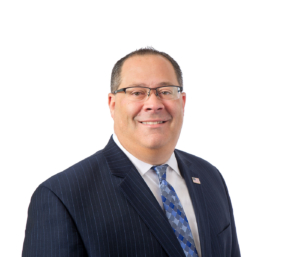In a continuing battle to reduce the exponential growth of coronavirus infections in Ohio, Governor Mike DeWine recently announced Ohio’s adoption of an overnight daily curfew, effective on Thursday, November 19, 2020. The mandate, in the form of an order from the Director of the Ohio Department of Health, will be in place for at least 21 days.
At a news conference earlier in the week during which he discussed the planned curfew, the Governor stated: “The curfew is aimed at helping to reduce the number of person-to-person contacts because the only way the virus lives is when it goes from one person to another. We have to flatten this curve again and get this under control.” According to the Governor, the overnight curfew was deemed to be “the most impactful option with the least disruption.”
The order, which was not posted to the State’s coronavirus website until a few hours before the curfew first took effect, is entitled “Director’s Stay At Home Tonight Order.” It cites the fact that every Ohio county currently qualifies as a “high incidence” county, necessitating “immediate action” intended to “slow the spread while keeping Ohio’s economy functioning.”
While the curfew is in effect, all Ohio citizens are ordered to remain in their place of residence from 10:00 p.m. until 5:00 a.m., except as otherwise permitted by the order. “Residence” is defined to include the obvious – homes, apartments, and condominiums – but also places like college dormitories, hotels, “shared rental units,” and shelters. Persons whose residence is unsafe, such as domestic violence victims, are permitted and encouraged to leave their home in favor of a safer alternative.
The curfew has several broad categories of exceptions. First, it does not apply to religious observances or any First Amendment protected activity, including the work of the media.
Second, the curfew does not restrict any travel in or out of Ohio. This includes travel required by court order, “including to transport children pursuant to a custody agreement,” for early arrival for security purposes (think, get to the airport early), or to obtain fuel.
Third, the curfew does not apply to persons leaving their place of residence to engage in any of the following categories of “Essential Activities”:
- for health and safety reasons, including visiting a hospital, emergency department, urgent care clinic, or pharmacy;
- to obtain or deliver necessary services and supplies, including food and beverages (that “may be obtained only for consumption off-premises, through such means as in-house delivery, third-party delivery, drive-through, curbside pick-up, and carry-out”);
- for necessary social services, which shall be broadly construed to ensure no limitation on delivering services to those in need;
- for work, including volunteer activities;
- to take care of or transport family members, friends, or pets in another household; and
- for performing or accessing government services, including law enforcement and other first responders.
Although the Order was issued by the State Department of Health, any questions regarding its provisions should be directed to local health departments. Also, for communities that have adopted measures more restrictive than the overnight curfew, those provisions take precedence.
The curfew remains in effect until December 10, 2020, unless modified (or extended) by further order.
If you have questions, please reach out to us here. We are happy to help.
Darrell A. Clay is a partner at Walter Haverfield who focuses his practice on labor and employment and litigation. He can be reached at dclay@walterhav.com or at 216.928.2896.
